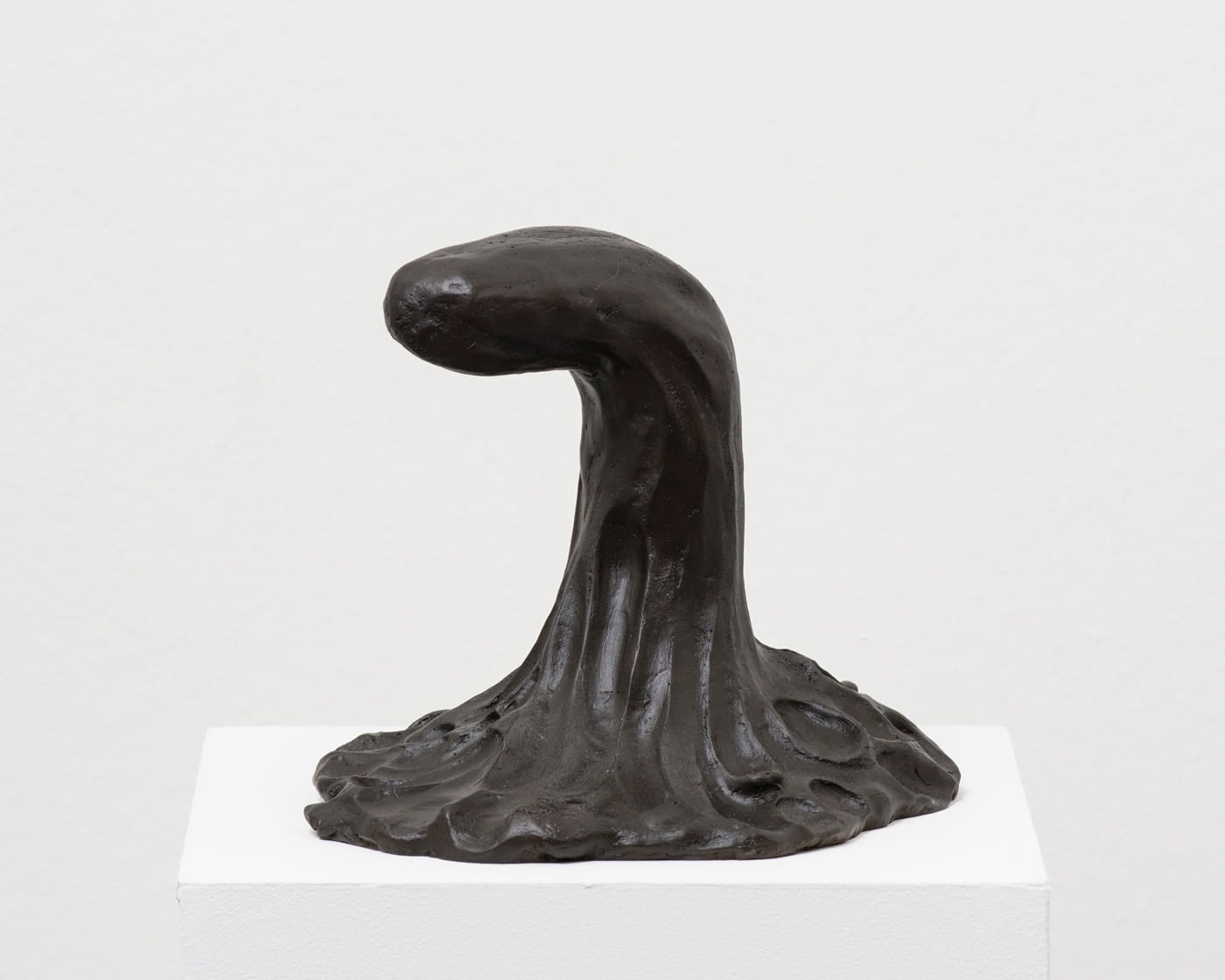





Erika Verzutti
Tarsila, 2004-2018
Bronze
20 x 20 x 27 cm, 7 3/4 x 7 3/4 x 10 5/8 in
Edition 3/3
© Erika Verzutti
Further images
In 2003, Verzutti began creating the 'Tarsila' family, a tribute to Tarsila do Amaral, the Brazillian Surrealist whose curved phallic motif, a feature of her 1929 painting 'Sol poente' was...
In 2003, Verzutti began creating the 'Tarsila' family, a tribute to Tarsila do Amaral, the Brazillian Surrealist whose curved phallic motif, a feature of her 1929 painting 'Sol poente' was adapted into forms of a swan, cucumber or dinosaur.
Tarsila do Amaral or simply Tarsila (as she is popularly known in her home country) is best known because of how she conjugated a Modernist aesthetic with her research into the roots of Brazilian identity, reflective of its folk and vernacular traditions. Curators Stephanie D’Alessandro and Luis Pérez-Oramas once proclaimed her the inventor of modern art in Brazil. One of Tarsila’s most iconic works, A Negra (1924), is seen in the foreground of the Manifesto Antropófago (Cannibalist Manifesto, 1928) by her husband Oswald de Andrade. Employing the concept of anthropophagy, this manifesto declared Brazilian culture as cannibalistic towards European culture: it devoured it, digested it, absorbed it, and reformulated it into something new. The Anthropophagous movement became a vital source for multiple artists of successive generations—most notably Lygia Clark and Hélio Oiticica, which explains why this phase of Tarsila’s work is so widely referenced.
Weight: 6 kilos
Tarsila do Amaral or simply Tarsila (as she is popularly known in her home country) is best known because of how she conjugated a Modernist aesthetic with her research into the roots of Brazilian identity, reflective of its folk and vernacular traditions. Curators Stephanie D’Alessandro and Luis Pérez-Oramas once proclaimed her the inventor of modern art in Brazil. One of Tarsila’s most iconic works, A Negra (1924), is seen in the foreground of the Manifesto Antropófago (Cannibalist Manifesto, 1928) by her husband Oswald de Andrade. Employing the concept of anthropophagy, this manifesto declared Brazilian culture as cannibalistic towards European culture: it devoured it, digested it, absorbed it, and reformulated it into something new. The Anthropophagous movement became a vital source for multiple artists of successive generations—most notably Lygia Clark and Hélio Oiticica, which explains why this phase of Tarsila’s work is so widely referenced.
Weight: 6 kilos
Provenance
The ArtistExhibitions
Erika Verzutti, Nottingham Contemporary, Nottingham, UK, 22 May - 31 October 2021Erika Verzutti, Centre Georges Pompidou, Paris, France, 20 February - 15 April 2019





